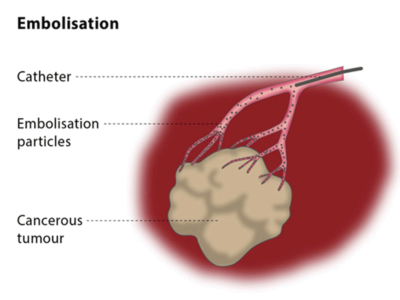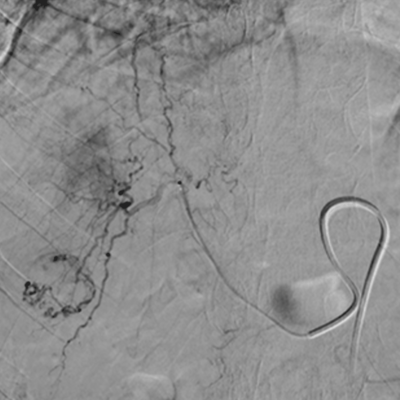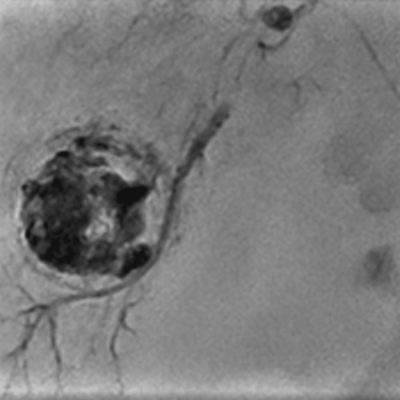TRANSARTERIAL CHEMOEMBOLISATION (TACE)
Patient Education Material



If you have large tumours in your liver, kidneys, lungs or bones, this treatment may be beneficial for you. There are different ways in which embolisation can be used in oncology. It can be used simply to cut off blood supply to the tumour (bland embolisation), or combined with chemotherapy to deliver the drugs directly into the tumour (chemoembolisation), or the particles may contain doses of radiation to selectively kill the tumour cells (radioembolisation).
Embolisation is also suitable for some non-cancerous tumours. Occasionally, embolisation may be used to reduce blood supply before a surgical procedure to increase patient safety.
You should not eat anything before the procedure, and you may be given a sedative to help you relax. It is important that you stay still during the procedure to ensure that the X-ray images taken are accurate. The procedure will last around one hour.
You will be given a local anaesthetic for the procedure. The interventional radiologist will puncture an artery in your thigh with a small needle and will then thread a combination of plastic tubes (called sheaths and catheters) and guidewires into your arteries.
The interventional radiologist will inject a contrast medium (dye) through a catheter so that the area can be seen clearly under imaging. Then, the interventional radiologist will carefully navigate a microcatheter as close as possible to the tumour and will release the embolic particles. The particles are usually microspheres that are less than 0.5 mm in size and these may be combined or loaded with chemotherapy or yttrium radiation.
Most patients experience some pain and nausea after the procedure, so you will be offered strong painkillers and medication to prevent nausea. You may be discharged on the same day, but if you experience severe symptoms after the procedure you may need to stay in hospital overnight.
Kindly contact:
- One PKLI Avenue, DHA, Phase-6, Lahore, Pakistan.
- info@pkli.org.pk
- +92 42 111 117 554

